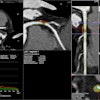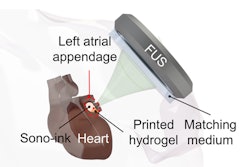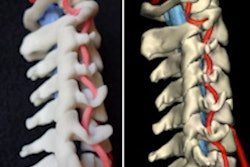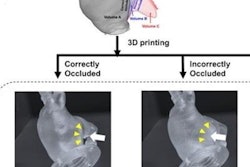
Although a minority of radiology chief residents are exposed to 3D printing as part of their current curricula and clinical practices, most want to learn about the technology and incorporate it into their residency experience, a survey has found.
Researchers led by doctoral candidate David Chen from Washington University in St. Louis surveyed radiology chief residents from accredited North American radiology residency programs to assess their interest level and experience with 3D printing during their residencies.
Although over half of the programs had 3D printing at their institution, only one-third of those offered structured opportunities for residents to be involved. However, more than half of the survey respondents felt they would benefit from exposure to 3D printing or educational material.
"These data may be used to inform radiology educators of potential benefits and resident-level interest in integrating 3D printing education into radiology residency," Chen and co-authors wrote in the study published April 27 in 3D Printing and Medicine.
The residency training period allows physicians to develop competency in their clinical practice and gain exposure to their field, including in radiology. As radiology is at the intersection of technology and medicine, residency programs may wish to consider integrating educational materials on 3D printing into their curriculum, the researchers suggested.
Chen and colleagues collected survey data from 152 chief residents from 90 North American radiology residencies who are part of the Association of University Radiologists.
Out of the total, 54 programs (60%) reported having 3D printing at their respective institutions. However, only 18 (33%) of those programs reported having structured opportunities for resident contribution, according to the authors. The researchers said that 91 (60%) of the respondents felt that 3D printing exposure or educational material about the technology would be beneficial.
In other findings, 84 (56%) of residents (n = 84) believed that the technology should be housed in radiology departments. When asked why, 50 (33%) of respondents said this is because of radiologists having knowledge of imaging and segmentation while 34 (22%) felt that the technology would help increase communication and improve relationships between radiologists and surgeons.
While another 52 (34%) were unsure about 3D printing being centered in radiology departments, 15 (10%) indicated no. For the latter, seven respondents believed that 3D printing is too costly, time-consuming, or outside the scope of practice for radiologists, and the other eight respondents felt that surgeons should have control over the technology.
The researchers acknowledged that while the majority of respondents were optimistic about 3D printing's place in radiology departments, this "likely" reflects a bias as only radiology residents were sampled.
"3D printing will be institution-specific and ultimately determined by funding availability and financial commitment from hospital and university administrations," they wrote.
Still, the study authors highlighted that their findings show interest and enthusiasm from radiology residents when it comes to integrating the technology into residency curricula, despite reimbursement challenges and clinical adoption at relatively few hospitals.
"Residency programs and program directors may do well to consider integration of 3D printing training to better prepare trainees to take advantage of the clinical applications of 3D printing in their future practices," they wrote.




















